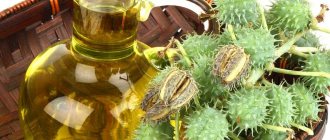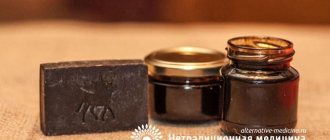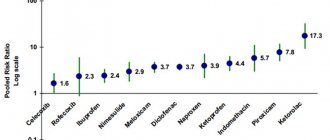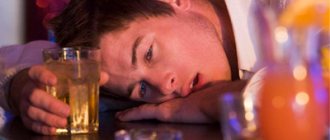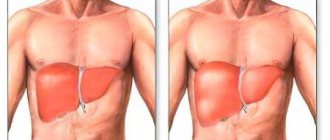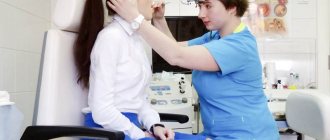Home>Articles>What methods to use to cleanse the liver after alcohol
quick menu (hide)
- The effect of alcohol on the liver
- Is it possible to restore the liver?
- Methods of cleansing
- Liver tablets
- Healthy regime
- Proper nutrition
- Healthy foods
Alcohol abuse is the scourge of modern society. Addiction to alcohol-containing drinks a detrimental effect on health. Coming out of a binge, a drunkard needs not only the support of loved ones, but also psychological help. At this time, it is necessary to ensure the recovery of the liver after alcohol. After all, this important organ of the digestive system is the body’s filter, which is responsible for cleansing the body of harmful substances that come from intoxicating drinks. In order for the liver to “screw up its strength”, it is necessary to take care of taking special medications and folk remedies, ensure proper nutrition, and adherence to the regime. Read about all effective methods in our material.
Negative effects of alcohol on the liver
Regular consumption of alcoholic beverages can lead to serious health consequences. The body does not find the resources to cope with the harmful substances contained in alcohol. The liver is especially affected. In this organ, cells responsible for the synthesis of proteins, the transformation of carbohydrates, and the removal of endogenous components are destroyed. As a result, the liver enlarges and chronic inflammation occurs. In addition, ethanol alcohol causes:
- fatty liver cells;
- oncological diseases;
- cirrhosis;
- liver failure .
note
First of all, alcohol negatively affects the liver, since this organ produces enzymes that neutralize alcohol. However, it is designed in such a way that even under the influence of ethanol it is capable of self-healing. To speed up the liver “healing” process, you need to use medications, change your regimen, and switch to a healthy diet.
Bile acids for the liver
Another important group of pharmaceutical products for the liver are bile acid preparations (ursodeoxycholic acid, UDCA), which have a wide spectrum of action (available by prescription). Several beneficial effects are described for them:
- protection of liver cells from death;
- suppression of fibrosis;
- choleretic effect;
- prevention of the formation of gallstones.
UDCA reduces the concentration of toxic bile acids in the hepatic ducts, stimulates their excretion, and also reduces the saturation of bile with cholesterol and reduces the lithogenic index of bile. It is stated that UDCA molecules are embedded in cell membranes and protect them from the action of toxic bile acid salts, which, in fact, causes a hepatoprotective effect. In general, hepatoprotectors based on ursodeoxycholic acid are well tolerated, but unwanted drug interactions are possible - for example, possible increased absorption of the immunosuppressant cyclosporine or decreased absorption of the antibiotic ciprofloxacin. In addition, additional studies are required to confirm the effects of UDCA from the perspective of evidence-based medicine (1, 2, 3, 5, 8).
Is it possible to renew the liver after a break with alcoholic beverages?
As noted above, the liver is a unique organ in the body that has the ability to heal itself. Moreover, this process is possible even if a person has been drinking alcohol for a long time. It is clear that it takes time to replace parenchyma cells; for example, in the most advanced cases this period can be several years. To speed it up, you should cleanse your liver of ethanol.
Only a competent doctor, based on a thorough and comprehensive examination, will be able to determine the level of damage to the organ and prescribe medications that will help put it in order. You should not self-medicate without contacting a qualified specialist. In this case, you can only worsen your condition, aggravate an already difficult situation. Treatment, even on its own, will not help alcoholics who continue to systematically use alcohol-containing products. Such people, who do not think about their health, will most likely face cirrhosis and cancer.
"Detox" for the liver
Drugs with a detoxifying effect, strictly speaking, are not hepatoprotectors, but are also used for liver diseases to reduce the formation of toxic substances or speed up their disposal. There are drugs with direct and indirect action. The direct detoxifying effect is to increase ammonia metabolism in the liver and brain and, as a result, reduce hepatic encephalopathy. Drugs with indirect action reduce the formation of endogenous toxins, accelerate their metabolism or stimulate the production of substances associated with the elimination of toxicants.
Interestingly, some members of this class have been described to have additional therapeutic effects, making them very effective drugs for the liver—for example, the high antidepressant activity of ademetionine and methodoxin (available by prescription). However, more research into these effects is required (1, 2, 3, 6).
The drug ornithine aspartate, according to the manufacturer's commentary, is included in the ornithine urea cycle, which reduces the level of toxic ammonia in the body (direct detoxifying effect). In addition, its positive effect on protein metabolism is described. However, the drug cannot be used in cases of severe renal failure and during lactation. Use with caution - in pregnant women (1, 2, 3, 5, 7).
A similar mechanism of action is described for the drug arginine glutamate - acceleration of ammonia utilization in the urea cycle, binding of ammonia into non-toxic derivatives, acceleration of its excretion, as well as antioxidant, antihypoxic and membrane-stabilizing effects, activation of ethanol metabolism. At the same time, the drug can enhance the effect of antiplatelet agents and weaken the effect of the antitumor drug vinblastine. There have been no studies on the safety of its use during pregnancy and lactation (1).
Methods for cleansing the liver after drinking alcoholic beverages
Weakening of the body due to alcohol consumption occurs due to the toxic effects of ethanol. To recover and get rid of the negative effects of this substance, you need to become addicted to a sober lifestyle and be patient.
Not only the time during which a person gives up alcohol can cleanse the liver. It is important to take medications and use traditional medicine methods. Together, they will allow you to completely get rid of the remaining ethyl alcohol. An equally important factor that will help you regain strength and health is the organization of proper nutrition. Food should contain the required amount of vitamins E and C, as well as antioxidants.
Liver and placenta
The group of hepatoprotectors of animal origin includes drugs obtained from animal liver and human placenta. According to the manufacturers' instructions, hepatoprotectors of this group stimulate the regeneration of hepatocytes and have an antioxidant effect. However, they may also be unsafe for some patients, like other drugs of biological origin. Thus, patients with active forms of hepatitis have a risk of worsening their condition, in addition, there is a risk of developing allergic reactions. The use of cattle liver can be dangerous in terms of the spread of prion neurodegenerative diseases (5).
Effective tablets for the liver after alcohol
To start or speed up the process of liver cell regeneration, it is necessary to resort to special medications. Tablets that stimulate hepatocyte renewal should be prescribed by a doctor. In addition, the patient should take vitamins and use general detoxification products. All these methods, characterized by a high positive effect, are aimed at strengthening the body. Depending on the condition of the digestive system organ, choose one of the following medications for the liver after alcohol:
- hepatoprotector "Dipana". The drug, which contains components of plant origin, will help rid the liver of toxins. If you follow the dosage specified in the instructions, the product is safe and does not have a negative effect on other organs. The drug, which is prescribed two tablets every day, is effective in detecting cirrhosis and hepatitis. The course of treatment ranges from one to two months.
- hepatoprotector "Essentiale". This drug, which has a healing effect on the liver, is available in capsules or injections. The standard course of treatment lasts two weeks. The medicine strengthens the membranes of hepatocytes. It can have a beneficial effect on such terrible diseases as hepatitis and cirrhosis.
- Allohol tablets. The liver cleansing product is based on natural ingredients, as well as activated carbon and condensed bile. Such components are not capable of harming other organs. The course of admission is one month. The drug will have the required effect for diseases such as hepatitis, the initial stage of cirrhosis, problems with the liver ducts.
Medications help normalize enzyme activity and restore liver function. Modern medicines of herbal and synthetic origin will ensure effective cleansing of toxins, free radicals, and other harmful substances.
Fats for the liver
One of the most frequently prescribed groups of hepoprotective agents for liver treatment is essential phospholipids. They are similar in structure to endogenous phospholipids of cell membranes, but contain a larger amount of polyunsaturated fatty acids. They are believed to restore damaged membranes in hepatocytes and have antioxidant and antifibrotic effects (1, 2, 3). This class of drugs is generally well tolerated, but may cause diarrhea. In addition, some parenteral forms appear to have a negative effect in pre-existing cholestasis (1). There are combined forms containing phospholipids and glycyrrhizic acid, as well as phospholipids in combination with vitamins and methionine (an essential amino acid associated with the synthesis of endogenous phospholipids and the neutralization of xenobiotics).
Following a healthy routine
Compliance with the regime is one of the conditions that will help a person, after prolonged consumption of alcohol-containing drinks, to put himself in order. Adhering to a special daily routine is recommended not only for avid alcoholics, but also for adults suffering from stress and nervous tension. Every person interested in maintaining health can follow simple conditions:
- sports, moderate physical activity;
- adequate sleep, adherence to a rest regime;
- visiting a bathhouse, sauna, water procedures.
Experts recommend avoiding visiting places where many people can be present at the same time. They declare that a person must change his thinking, give up old habits, and fill his life with positive emotions. By following simple rules you can significantly improve your mental state.
Causes of liver dysfunction
Poor nutrition
. Abuse of fatty foods, smoked meats, pickles, hot seasonings - all this can lead to various diseases. When the amount of harmful substances entering the body becomes too large, the liver is unable to neutralize all the toxins. The development of obesity due to poor nutrition is dangerous for health, but attempts to suddenly lose weight can also cause problems. In an extreme situation, the liver turns on protective mechanisms and begins to quickly accumulate fats and carbohydrates, which provokes damage to the organ.
Alcohol abuse
. A fairly common cause of liver damage is systematic and excessive consumption of alcoholic beverages. Constant intoxication of the body can lead to disruption of the functions and structure of this vital organ. The cells involved in neutralizing alcohol increase in size. As a result of accelerated synthesis of fatty acids, alcoholic liver damage occurs.
Hepatotoxic effects of medications
. Long-term use of certain medications without a doctor's prescription (for example, antibiotics) can cause effects no less severe than damage to the body from toxins or poisons.
Against the background of poor nutrition, excessive alcohol consumption, and uncontrolled use of medications, the development of hepatosis, cirrhosis, toxic liver dystrophy, cholelithiasis, acute or chronic hepatitis can occur. Often, exposure to negative factors leads to dystrophic, necrotic and fibrotic changes in the organ. Irreversible disruption of the full functioning of the gland leads to liver failure. In turn, this can provoke serious metabolic disorders and intoxication of the body, including death.
Proper nutrition after alcohol
There is no clear answer to the question of how long it takes for the liver to recover after alcohol. It all depends on how long a person could not live without alcohol-containing drinks. Cleansing the digestive system organ should begin with choosing the right diet. Experts advise adhering to the following scheme:
- at least two liters of clean water per day;
- elimination of fried, highly salted, smoked foods;
- introduction of fresh vegetables and fruits into the diet;
- consumption of fermented milk products.
For people who give up alcohol, doctors recommend eating foods that have a choleretic effect. Products such as zucchini, carrots, onions, pumpkin, and butter will come to the rescue. It is worth paying attention to medicinal plants. Treatment with herbs that are not addictive will restore the digestive system. For example, you can use a decoction of St. John's wort and corn harvest. You should drink a glass of chilled drink a day for a month. It will have a beneficial effect on the body as a whole on an empty stomach, and most importantly it will help the liver recover.
A remedy for the liver after alcohol is vegetable juices. In this case, the former alcoholic switches to a raw food diet for a while. Vegetable juices are sources of useful substances such as calcium, zinc, magnesium. Particular attention is paid to the carrot drink, which should be taken for a month.
Etiotropic drugs
Etiotropic therapy drugs are medications whose action is aimed at suppressing vital activity and destroying infectious agents. This group includes:
- antiviral agents
– natural and recombinant interferons. Recommended for the treatment of viral hepatitis; - antibiotics
– macrolides, fluoroquinolones, cephalosporins, tetracyclines. Used in the treatment of diseases of the gallbladder and biliary tract; - antifungals
– medications for the treatment of deep mycoses (fungi). Prescribed for disseminated candidiasis, aspergillosis, cryptococcosis, candidomycosis; - antiprotozoal
- antigiardiasis drugs metronidazole and furazolidone.
Other Natural Foods Helpful for Liver Recovery
The liver is an organ that withstands the main load by processing ethyl alcohol. He needs additional help to restore normal functioning. There are several products you should pay attention to that can cope with this task:
- oats The natural product contains many components that are essential for the body. Therefore, a decoction from it should be drunk before meals. It is very easy to prepare. One and a half liters of boiling water will require a handful of whole oatmeal flakes;
- berries. Currants, blueberries, blueberries are foods that should be included in the diet. Watermelon is an irreplaceable berry that washes toxins out of the blood;
- garlic, lettuce. One clove of garlic per week, which contains selenium, will help cleanse the liver. Greens help activate the flow of bile.
Beets, avocados, grapefruits, limes, walnuts, and turmeric will also benefit. Eating foods that help remove toxins from the body more quickly will help improve your health. An integrated approach, that is, the use of medications, adherence to a daily routine, and consumption of healthy foods is a guarantee of restoration of one of the most important organs of the digestive system.
Now it’s clear how to cleanse the liver after drinking alcohol. Take care of your health! Excessive consumption of alcoholic beverages does not lead to anything good! It is necessary to take care of your well-being! This is the only way to live and enjoy the pleasant moments that every day gives.
Means of symptomatic therapy
Medicines for symptomatic therapy, unlike pathogenetic drugs, reduce the manifestations of the disease, but do not affect the cause of its occurrence.
Antispasmodics
Antispasmodic drugs are prescribed for spastic pain accompanying hepatic colic. In this situation the following can be used:
- neurotropic drugs that disrupt the innervation of myocytes of the gallbladder and biliary tract;
- myotropic, changing biochemical processes in smooth muscle cells of the liver;
- combined (neuromyotropic) complexes.
Analgesics
For short-term relief of pain in the liver area, narcotic and non-narcotic analgesics are used.
- Opioid (narcotic) drugs
. They affect the central nervous system and are prescribed in strictly defined doses to relieve severe pain. - Non-narcotic drugs (derivatives of salicylic acid, aniline, pyrazolone)
. Used for less severe pain symptoms. They have an analgesic effect, reduce the permeability of the walls of liver capillaries, suppress the synthesis of prostaglandins and interleukin-1, and prevent the release of bile enzymes into tissues and blood.
Antiemetics
To relieve nausea and vomiting, which are frequent accompaniments of liver diseases, antiemetic drugs (gastrokinetics) are used.
Vitamins
The most essential micronutrients for the liver are ascorbic and lipoic acid, vitamin E, which maintains the stability and integrity of hepatocytes. B vitamins and retinol are also necessary to restore and maintain the normal functioning of the organ.
Detoxifying agents
Detoxifying medications used to stop exposure to toxic substances include:
- laxatives and emetics;
- osmotic diuretics;
- water-electrolyte balance regulators;
- sorbents;
- blood and plasma substitutes.
In case of toxic liver damage, antidotes (chemical or biological antagonists) are used to neutralize the poison, prevent or eliminate the effect it causes.
Glucocorticosteroids
Can be recommended for use as a means of pathogenetic treatment for severe liver diseases. These drugs regulate immunological activity, suppress the production of antibodies, inhibit the formation of connective tissue, reduce the manifestations of the inflammatory reaction, have a tonic effect, and inhibit the development of intrahepatic bilestasis.
Probiotics
Probiotic preparations are complexes of viable beneficial bacteria. They normalize the composition of the intestinal microflora and are used to restore the normal functioning of the hepatobiliary system and the entire digestive tract after etiotropic therapy. These drugs are also used in the treatment of patients with liver cirrhosis. Colonization of the intestines with beneficial bacteria significantly reduces the level of serum ammonia concentration, preventing the development of hepatic encephalopathy.
Drug-induced liver damage. Clinical manifestations
Most often, patients complain about:
- weakness, loss of appetite, nausea,
- yellowness of the sclera and skin,
- itchy skin.
With stagnation of bile (cholestatic hepatitis), the first symptom is jaundice, accompanied by itching, fever, dyspeptic symptoms (nausea, bitterness in the mouth, heaviness in the right hypochondrium), weakness, and decreased ability to work.
Upon inspection, the following is revealed:
- yellowness of the sclera,
- moderate enlargement of the liver,
- discolored stool and dark urine.
With a mixed type of acute drug-induced hepatitis, development begins with jaundice with a short pre-icteric period with the manifestation of dyspeptic disorders. Jaundice can last up to 2-4 weeks.
Acute drug-induced hepatitis is relatively rare and develops 5-7 days after starting medication. It is more common when you use the same drug multiple times or take multiple medications.
Drug-induced liver damage can initially occur covertly without a phase of acute hepatitis with general weakness, malaise, and decreased ability to work (asthenia). Liver damage in these cases is detected as an incidental finding in blood tests (blood biochemistry). All biochemical changes in the blood normalize after 2 weeks when the drug that caused the liver damage is completely discontinued. This form of liver damage can be caused by antibiotics, hormonal agents, anti-tuberculosis drugs, etc.
Treatment of drug-induced liver damage
Treatment of drug-induced liver injuries mainly involves discontinuation of the hepatotoxic drug with regular repetition of biochemical tests. Improvement occurs 1-2 weeks after discontinuation of the drug. Stagnation of bile (cholestasis) resolves more slowly. Patients often do not require a hospital stay.
But to eliminate liver dysfunction, it is recommended to prescribe hepatoprotectors:
- flavonoids (milk thistle fruit extract),
- antioxidants (ademetionine),
- derivatives of ursodeoxycholic acid (Ursofalk, Ursosan, etc.),
- essential phospholipids, phospholipid preparations, lipoic acid.
In addition to them, therapeutic nutrition is prescribed, sorbents are introduced, and symptomatic treatment is carried out. Doses and duration of treatment are adjusted by the doctor.
Complications of liver cirrhosis
They are the result of carelessness or lack of awareness of the seriousness of the consequences. Severe complications cannot be cured and cause death. These include:
Ascites is an accumulation of liquid substance in the peritoneum. The abdomen increases, which is noticeable even in a lying position. There is weight gain and swelling of the legs. Swelling does not go away after rest and makes movement difficult.
Bacterial peritonitis occurs when fluid in the abdominal cavity becomes infected. Body temperature rises - up to 40C, severe pain and malaise appear. In the absence of emergency assistance, death occurs.
Hepatic encephalopathy is a neurological symptom complex. Headache, dizziness, and unsteady gait are observed. Often progresses into a coma.
Acute renal failure due to dysfunction of the hepatobiliary system. In the absence of timely resuscitation, it ends in death.
Portal hypertension is accompanied by varicose veins of the gastrointestinal tract. Because of this, bleeding begins, during which the pressure drops, and vomiting with bloody elements appears. The condition often ends in death. Resuscitation does not always help save the patient.
Hepatocellular carcinoma is the formation of a cancerous tumor. Occurs when the disease lasts for a long time. Provoking factors are considered to be heredity and bad habits - smoking, alcoholism. In case of single tumors and the absence of metastases, it is removed surgically. In case of extensive degeneration, transplantation will help solve the problem.
The likelihood of complications of liver cirrhosis increases significantly with an inadequate approach or late detection of problems. To protect yourself, you need to undergo a preventive examination once a year, take general and biochemical tests, and do an ultrasound scan of the body. At the slightest suspicion, it is better to consult a doctor.
To prevent liver cirrhosis, play sports or engage in other adequate physical activities. Classes should be regular, preferably in the fresh air. This will help avoid stagnation. The psycho-emotional background is of great importance. Stress causes spasm of internal organs, which affects their functioning. It is better to avoid negative emotions as much as possible.
You should not ignore problems with bile discharge and excess weight. It is important to follow healthy eating rules. Doctors advise keeping a food diary. More movement, less negative emotions - the rule for restoring strength. An active lifestyle and giving up bad habits - drinking alcohol and smoking - will help avoid serious health misunderstandings and eliminate the causes of liver cirrhosis.
Author of the article: Yakovlev Evgeniy Anatolyevich
Narcologist, Candidate of Medical Sciences.
Promising Reality: Accelerated Liver Regeneration
To study the processes of liver regeneration, transgenic mice of the tdTomato (tdTom) line were used. This line is modified with red fluorescent proteins, which allows visualization of liver cells [7]. However, the search for other “rescue” cells is complicated by the fact that hepatocytes in the affected body continue to work. To identify “non-hepatocytes,” the researchers used gene knockdown technology in mice. The knockdown effect is that it allows you to temporarily reduce the activity of specific genes without making changes to the chromosome structure and DNA sequence. To “turn off” the genes responsible for the division and migration of hepatocytes, special lipid nanoparticles with short interfering RNA (siRNA) were created [8], [9]. With their help, it was possible to block the expression of necessary genes.
Reducing the proliferation of hepatocytes by “turning off” the genes of interest to scientists was carried out using two models. In the first case, the ITGB1 , which encodes β1-integrin, was temporarily blocked. The second model is the simultaneous blocking of β1-integrin and stimulation of overexpression of the p21 protein. Both models had a similar effect, but their mechanisms differed: β1-integrin causes necrosis of hepatocytes, and overexpression of p21 suppresses their proliferation.
Figure 4. Liver regeneration using bile duct cells (highlighted in white).
[6]
Such a “blockade” of the main functional cells of the liver led to an unusual effect: when the main regeneration mechanism was turned off, a backup method was launched with the participation of bile duct cells. Thus, loss of β1-integrin and increased levels of p21 protein led to a significant increase in the number of cholangiocyte-derived hepatocytes. These epithelial cells of the intrahepatic bile ducts make up only 2-3% of the total population, but further observations showed that they are the ones that are able to “reprogram” and turn into hepatocytes, thereby restoring the liver (Fig. 4). Moreover, cholangiocytes showed a better ability to divide than hepatocytes. Previously, it was discovered that they are close to the oval cells of the liver—a kind of “stem” agent of this organ [10].
In order to track the regenerative abilities of cholangiocytes, three independent pathways were used:
- Modeling of cholestatic liver disease.
- Modeling of metabolic non-alcoholic steatohepatitis (an inflammatory process associated with excessive accumulation of triglycerides in the liver).
- Modeling of liver fibrosis (proliferation of connective tissue in the liver due to damage to hepatocytes).
To study liver regeneration due to non-hepatocytes along all three pathways, separate sections of the liver were visualized. It turned out that approximately 20–30% of hepatocytes are restored due to cholangiocytes, and small proliferative hepatocytes were identified already from the 7th day, and by the 14th day of regeneration their number increased significantly (Fig. 4–6).
Figure 5. Dynamics of restoration of liver tissue with the help of cholangiocytes (using the example of a model of cholestatic liver disease). Asterisks indicate necrotic areas; arrows indicate areas with cellular infiltrate.
[6]
Figure 6. Mouse liver cells transformed with the ITGB1 gene (day 14 of regeneration). Imaging with red fluorescent proteins. 1 — arrows indicate invasive cells; 2 - the area of the regenerative node is outlined with a dotted line.
[6]
It turns out that there is a reserve regeneration mechanism in the liver: the transformation of bile duct cells into functional hepatocytes when β1-integrin is blocked. It is possible that there are other target genes in the body, the “switching off” of which stabilizes the processes associated with the development of fibrosis and further cirrhosis of the liver. Scientists have yet to uncover the mechanisms of the signals that prompt bile cells to initiate “reprogramming” processes. However, the results of the study are already opening up a new direction in cellular regenerative medicine: the development of drugs that stimulate cholangiocytes. Perhaps in the future, medicine will eliminate the need to perform complex and expensive liver transplant operations. Instead, a more accessible technology will spread: “switching on” signals about the need for regeneration, when the processes of active division of liver cells will be launched with the help of the most active cholangiocytes.
A discovery foretold by myth: regeneration in reptiles
The ability of organisms to regenerate, that is, restore the structure and functions of organs, is one of the important mysteries of medicine that people have long been trying to unravel. Observations of the animal world made it possible to formulate the following pattern: the simpler an animal is, the easier it is for it to restore lost organs. And if an earthworm is able to “complete” half of its own body, and a lizard is able to grow a new tail, then in humans, regeneration abilities are represented in a narrower range [1], [2].
There are quite a lot of fairy-tale creatures that can grow a new head or tail. But both the Lernaean Hydra (Fig. 1), and the Gorgon Medusa, and even the Serpent Gorynych have a very real “relative” - triton. This representative of tailed amphibians is considered one of the oldest species of fauna on Earth. Newts successfully restore not only their tail and paws, but even damaged hearts and spinal cords. However, amphibians are far from the only creatures that have access to the “self-repair” function. For example, zebrafish are used not only in aquariums, but also to study the regeneration of heart tissue. And the first animal, thanks to which the term “regeneration” appeared, was the crayfish. The French scientist Rene Reaumur, who proposed a new term back in 1712, studied the restoration of lost legs in crayfish.
Figure 1. “The Battle of Hercules with the Lernaean Hydra” by Antonio del Pollaiuolo (1475).
"Wikipedia"
It is not surprising that scientists want to understand why a lizard, for example, can restore a lost tail, but a person cannot grow a new arm. Studying the structure and composition of tissues immediately after the lizard lost its tail made it possible to discover a model of regeneration in reptiles. During the healing period, the basal cells of the epidermis actively divide, gradually “closing” the wound. Additional aggregation of dividing cells at the distal end of the spine promotes blastema proliferation, an accumulation of unspecialized cells. At this moment, the processes of formation of new blood vessels are launched, and then new peripheral axons. New formations of bone tissue and muscles come into play most late. However, the exact mechanism of tail regeneration in lizards is not fully understood. Recent research from Arizona State University and the Institute for Genomic Research has identified microRNA molecules that promote muscle, cartilage, and spine regeneration [3]. Perhaps this work will allow the development of treatments based on the control of gene expression using microRNAs.
Which brand of liver medication is best to choose?
Among the huge variety of modern medications, it is difficult to immediately decide which drugs to cleanse the liver and prevent disorders. Domestic and imported pharmaceutical companies offer natural and safe tablets with improved formulas and new compositions.
The presented manufacturing companies are widely known due to the high quality and effectiveness of their products:
- Sanofi is a French-German pharmaceutical company specializing in a large number of medicines. Since its founding in 2004, the company has become the largest manufacturer of quality drugs, with representatives operating in more than 100 countries.
- Kanonpharma Production is a closed joint stock company in Russia, founded in 1998. In a short period of time, the company quickly acquired a modern production base.
- Madaus GmbH is a German company from Cologne, founded in 2007. The main slogan is the production of medicines using natural resources.
- Pharmcenter Vilar is a domestic pharmaceutical company specializing primarily in the creation of herbal medicines. Since its establishment in 1959, phytochemical production has been continuously improved.
- Clinic of the Institute of Bioregulation and Gerontology - the company has a patented technology for the serial production of drugs of natural origin. Founded in 2002 in St. Petersburg.
- Renaissance - a series of natural remedies for immunity, joints, women's and men's health, ENT organs. The company traces its history back to 1942; in 2005 it joined the Biotek group. It has over 115 types of biological additives. Available forms of release - dragees, capsules, powders, tablets.
- Evalar is the largest production of dietary supplements and natural medicines in Russia, founded in 1991. Today, it is the absolute leader in the country in terms of sales and creation of natural medicines.
- Richard Bittner AG is an Austrian company with the patented trademark “BITTNER”, which is considered a sign of high quality throughout the world. The main activity is the creation of natural and safe medicines.
- Laboratories Rosa - Phytopharma is a French manufacturer specializing in the production of various groups of medications for the treatment of internal diseases.
- Europe-Biopharm is an NPO in Russia, founded back in 1991. Since then, production has been aimed at providing people with natural medicines, dietary supplements and functional foods.
- Merz Pharma is a German world-famous manufacturer of the best drugs of all groups and classifications. The main focus is on the fields of neurology, dermatology and psychiatry. The main advantage is extensive experience, since the company was founded in 1908.
- Falk P harma GmbH the company was founded in Germany in 1960 on the basis of a family pharmacy by Dr. Herbert Falk. Since then, the main activity has been aimed at producing drugs for the needs of hepatology and gastroenterology.
- Merkle GmbH - the creator was the richest man, Adolf Merkle. The company was founded in 1881, first in the Czech Republic and Slovakia, and after the war the activities moved to Germany.
- Sopharma is a private Bulgarian manufacturer that has been giving people health for more than 80 years. In 1933, an association of pharmacists began to create a laboratory; since then, technologies have been constantly improved and natural, effective medicines are created.
- Abbott Laboratories is a chemical and pharmaceutical manufacturer from America, founded in 1888. In addition to medicines, it produces baby food, medicinal products and supplements.
- R.P. Scherer GmbH & Co. KG is a German company founded in 1950 by Robert Pauli Scherer, who developed the soft capsule form. In addition, they produce various essential oils, multivitamins, and dietary supplements.



